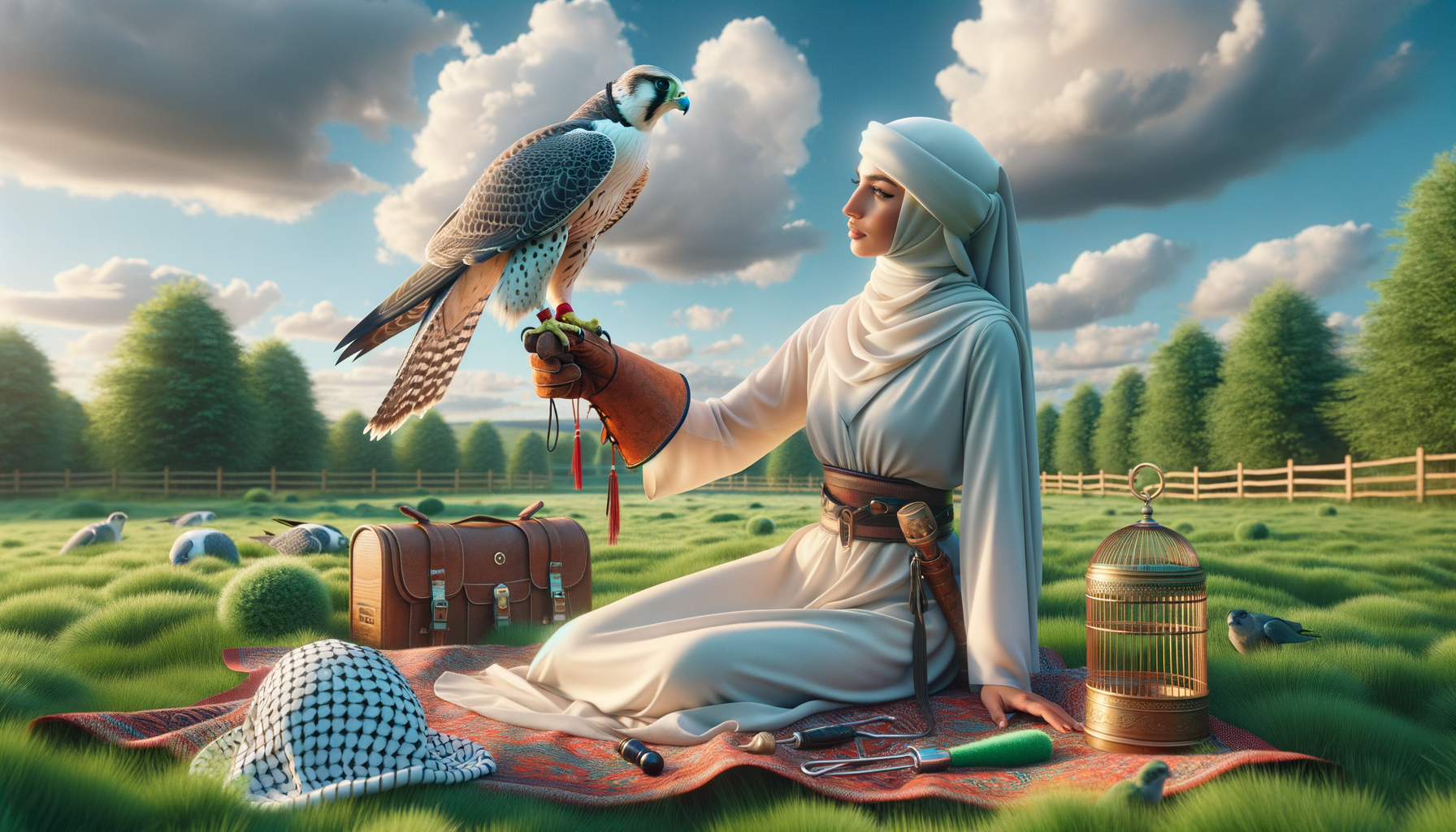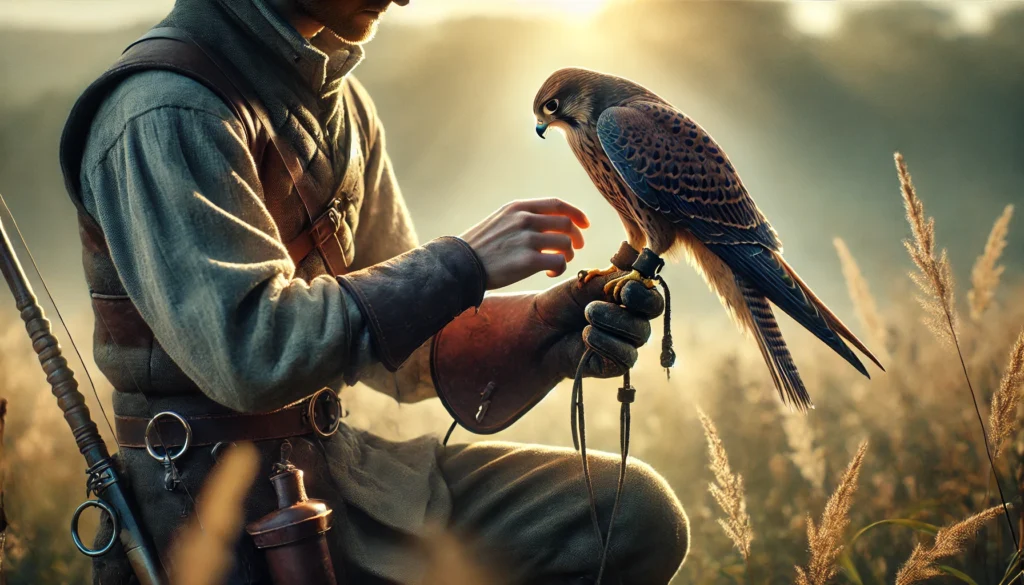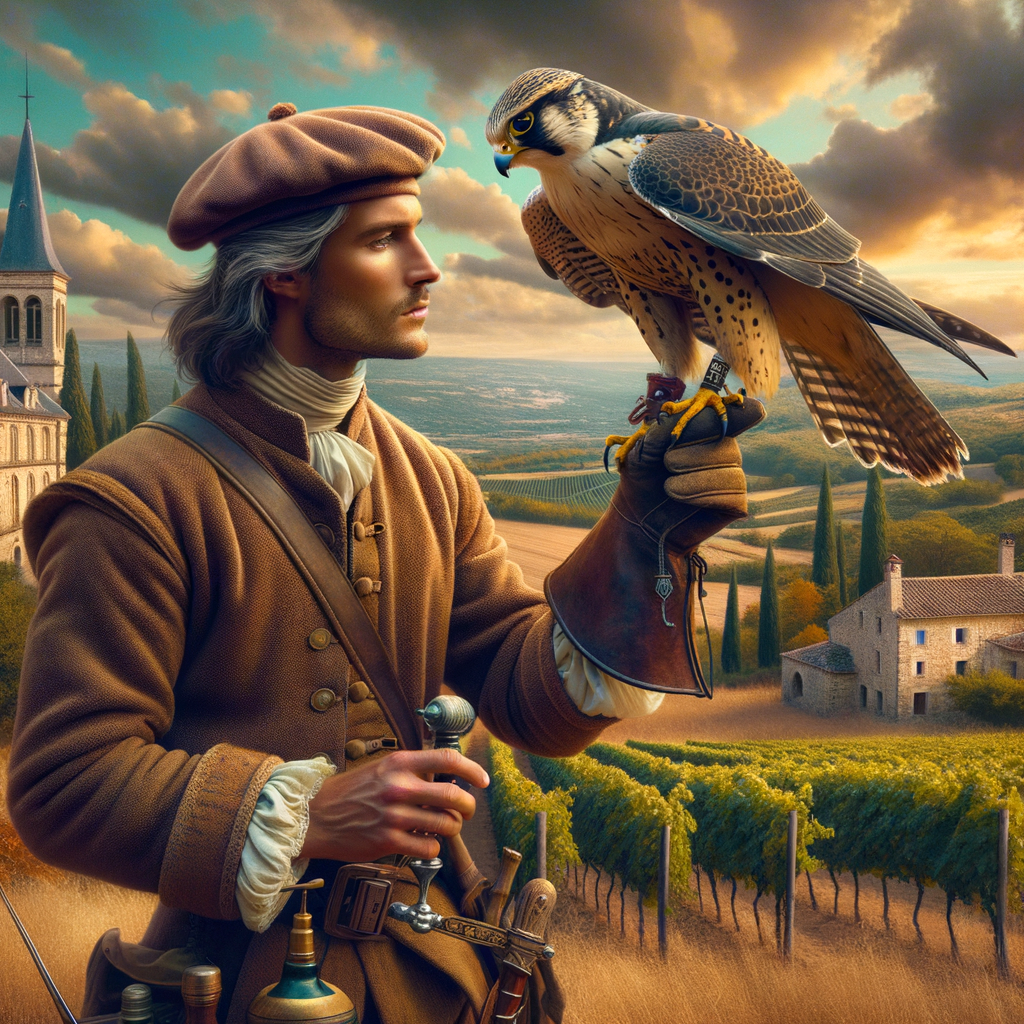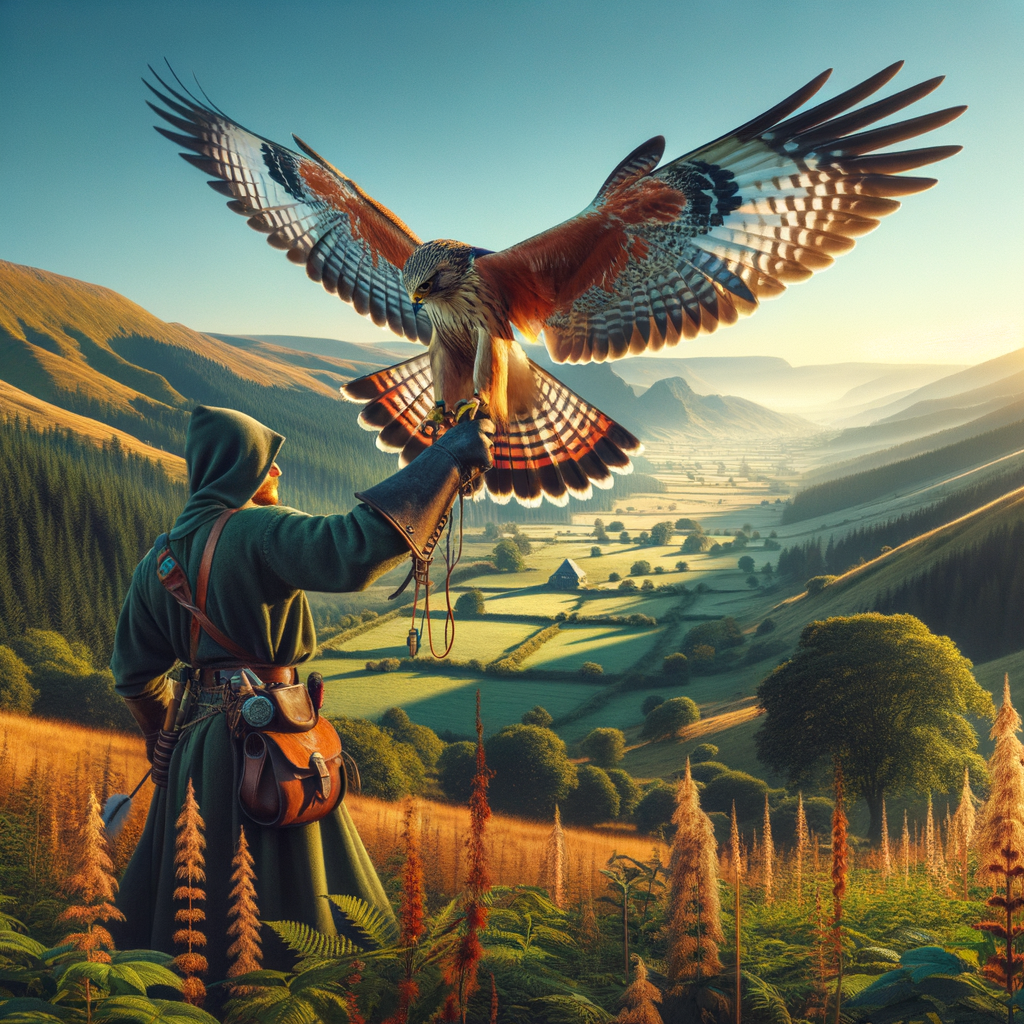Key Insights on Training Falcons for Shows
- Understanding Falconry: Falconry involves training birds of prey, especially falcons, to perform specific behaviors for shows or hunting.
- Start with Trust: Building trust between the falcon and the trainer is the first step. Spend time getting the falcon comfortable with human presence.
- Essential Equipment: Use gear such as hoods, jesses (leather straps), perches, and gloves. These keep the bird safe and comfortable.
- Healthy Diet: Falcons need a balanced diet, usually consisting of fresh meat. This keeps them strong and healthy.
- Teaching Commands: Use consistent commands and signals to train the falcon. Common commands include coming to the glove and flying from perch to perch.
- Positive Reinforcement: Reward the falcon with food treats when they follow commands correctly. This encourages them to repeat good behavior.
- Time and Patience: Training a falcon takes time and patience. Daily, short training sessions are more effective than long, infrequent ones.
- Flight Practice: Allow the falcon to fly freely in a safe environment to build their strength and confidence.
- Safety First: Always prioritize the safety of the falcon and everyone involved. Make sure the flying area is secure and free from hazards.
- Consistent Routine: Maintain a consistent training schedule. Falcons thrive on routine, which helps them learn and perform better.
- Health Check-ups: Regular veterinary check-ups are essential to ensure the falcon is in good health and ready for performances.
- Show Preparation: Gradually introduce the falcon to the show environment. Practice in realistic settings to get the bird accustomed to the sights and sounds of a live audience.
- Engaging Performances: Design shows that highlight the falcon’s natural behaviors and skills. Keep the audience entertained and educated about falcons and falconry.
- Continuous Learning: Stay updated with the latest falconry techniques and practices. Join falconry clubs and attend workshops to improve your skills.
The Magic of Training Falcons for Stunning Shows
Imagine stepping into a bustling Irish marketplace. There’s an air of anticipation as vendors set up their stalls and storytellers gather crowds with their tales. Suddenly, the crowd parts as an experienced trainer steps forward, a majestic falcon perched gracefully on their glove. This is the same excitement and magic we at Learn Falconry aim to bring to life through our article on training falcons for shows.
Training falcons isn’t just about teaching a bird to perform tricks; it’s about understanding their natural instincts and forming a deep, respectful bond. At Learn Falconry, we believe every falconer embarks on a unique journey, much like an Irish bard perfecting their craft to enchant listeners with their narratives. Our article delves into the nuances of this ancient art, giving you a front-row seat to the captivating world of falconry shows.
If you’re fascinated by the idea of witnessing a falcon’s agility and grace up close, or if you’re longing to learn the secrets behind their awe-inspiring performances, you’re in the right place. Stick with us, as we uncover the steps of training these magnificent birds, the challenges faced, and the rewards that come with every successful show.
Keep reading, and let the enchantment of falconry take flight.
Mastering Falconry Show Training
Training falcons for shows is an exciting journey that involves patience, skill, and dedication. Imagine the thrill of seeing a falcon soar through the sky, executing perfect maneuvers, and impressing the crowd! Let’s dive into the fascinating world of falconry show training, where every moment is filled with awe and wonder.
Understanding Falconry Show Training
Falconry show training is the process of preparing falcons to perform in public exhibitions. These shows demonstrate the beauty and grace of these magnificent birds while showcasing the falconer’s expertise. For an introduction to the history of falconry and how it all began, you might want to explore our detailed overview here.
Essential Equipment for Training
To start with, you’ll need specific equipment designed for falconry. Some of the essential gear includes hoods, gloves, and lures. These are crucial for ensuring the safety of both the falcon and the trainer. For a comprehensive guide to all essential falconry equipment, check out our resources on falconry equipment.
The Steps of Falconry Performance Training
- Initial Training:
Begin with basic training techniques to build a trustful relationship between the falcon and the trainer. This involves getting the falcon used to its new environment and the equipment. For basic training techniques, have a look at this. - Advanced Training:
Once the falcon is comfortable, advanced training methods come into play. This includes teaching the falcon to fly to the glove, respond to commands, and perform aerial maneuvers. Learn more about advanced strategies here. - Positive Reinforcement:
Using positive reinforcement techniques ensures that the falcons associate their performances with rewards. It makes training sessions fun for both the bird and the trainer. Discover the benefits of positive reinforcement here. - Health and Nutrition:
Keeping the falcon in peak health is essential for optimal performance. Proper nutrition and regular health check-ups are vital. For tips on maintaining falcon health, explore our falcon health and nutrition guide.
Preparing for Falconry Exhibitions
Training a falcon for exhibitions requires additional steps to ensure the bird is comfortable around crowds and performs consistently. This involves mimicry of the show environment during training sessions and gradual exposure to audiences. Learn how to tackle these challenges here.
Know Your Falcons
Different species of falcons have varying characteristics, and knowing your falcon can significantly affect the training process. Whether you’re working with a Peregrine Falcon or a Saker Falcon, understanding their unique traits is key to effective training. Discover the varied species and their behaviors here.
Legal Aspects to Consider
Before you start any training, it’s essential to understand the legal aspects of falconry. Laws and regulations vary widely depending on your location, and adhering to them is crucial for the ethical practice of falconry. For more information on legal requirements, visit our legal aspects of falconry.
By mastering these steps and understanding the equipment, nutrition, and legalities involved, you can embark on a rewarding journey of falcon performance training. Explore more about training falcons, equipment, and the rich history of falconry on our website to become a knowledgeable and skilled falconer!
Falconry Exhibition Training Aspects for 2024
Training Program
Falconry exhibition training programs are designed to provide both theoretical and practical knowledge needed to train falcons for public shows. These programs vary widely in duration, from as short as two days to as long as five days, catering to different levels of expertise.
| Program Duration | Level of Expertise |
|---|---|
| 2 days | Beginner |
| 3-4 days | Intermediate |
| 5 days | Advanced |
Cost of Training
The cost of participating in a falconry exhibition training program ranges from £300 to £750. This depends on the type of course, the number of participants, and the level of training provided.
| Cost | Program Length |
|---|---|
| £300-£500 | 2-3 days |
| £600-£750 | 4-5 days |
Training Content
The courses cover various aspects of falconry, including:
- Training and Handling Birds: Participants learn how to handle falcons, understand their behavior, and use proper care techniques.
- Flying Techniques: Techniques to train falcons to fly and perform in exhibitions are taught.
- Equipment Making: Making essential falconry equipment like hoods, jesses, and gloves.
Certification and Support
Upon completing the program, some courses provide nationally recognized certification, enabling participants to become approved falconers. Additionally, many courses offer ongoing support to help falconers during their journey, especially when handling their own bird of prey.
Prerequisites
Certain prerequisites must be met to enroll in these courses:
- Minimum Age: Some courses set a minimum age of 12 years. Under 16s often need to be accompanied by an adult.
- Experience: While some courses are open to complete beginners, others may require prior experience in falconry.
Equipment and Training Methods
Modern training methods include the use of drones, kites, and other tools to condition and train the birds. These innovative tools help ensure that the falcons are ready to perform their best during exhibitions.
| Equipment Used | Purpose |
|---|---|
| Drones | Flight training, conditioning |
| Kites | Training falcon for high flights |
| Traditional Tools | Handling and care |
Location and Personalized Instruction
Falconry schools are scattered across the UK, offering a variety of training setups. Some schools provide one-to-one tuition to maximize learning and individual attention.
By understanding these essential aspects of falconry exhibition training, participants can best prepare for and excel in this unique and engaging practice. This thorough training ensures that both the falconers and their birds are equipped for successful and entertaining shows.
Wrapping Up Your Falcon Training Journey
Training falcons for shows is an exciting and fulfilling endeavor that combines centuries-old traditions with modern techniques. Whether you are participating in a hawk walk, embarking on an apprenticeship, or attending specialized workshops, there are countless opportunities to deepen your understanding and skills in falconry.
Falconry isn’t just about flying birds; it’s an art that involves rigorous training, detailed knowledge, and a profound connection with these majestic creatures. With programs ranging from short two-day courses to eight-week intensive training, there’s something for everyone, regardless of age or experience level.
Remember, training falcons for shows is a commitment that extends beyond the classroom. It requires patience, consistency, and a genuine passion for these incredible birds of prey. Thankfully, many programs offer continued support and resources to ensure your journey into falconry is a successful and rewarding one.
So get out there, dive into the world of falconry, and embrace the thrill of mastering one of the oldest and most noble forms of animal training. Your adventure awaits, and the sky is the limit!



